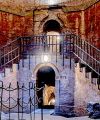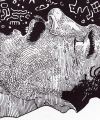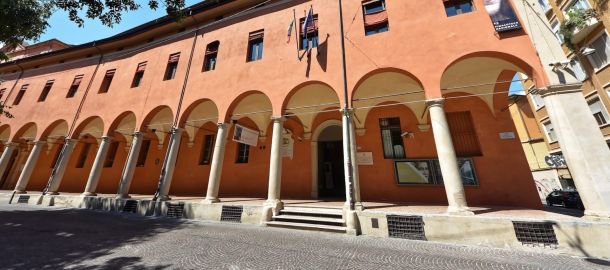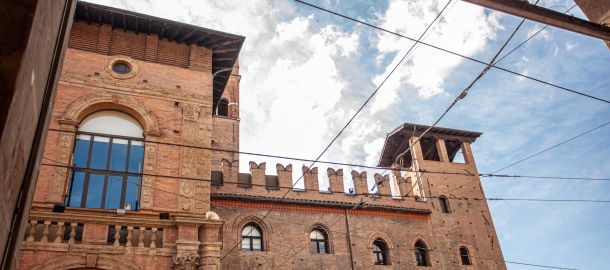Visit the Civic Archaeological Museum Bologna: Art and History

Located in via dell'Archiginnasio, inside Palazzo Galvani, the Civic Archaeological Museum of Bologna was born in the second half of the nineteenth century as a result of the union between the university museum and the municipal museum.
In addition to representing one of the main collection nuclei of the finds of the Region, the Bologna Archaeological Civic Museum houses among the most important and significant collections of Egyptian and Roman antiquities of Europe and has been the seat of prestigious exhibitions and exhibitions of an artistic nature in recent decades.
The collection of finds dating back to prehistory
One of the first stages of the exhibition itinerary of the Civic Archaeological Museum of Bologna allows you to admire finds dating back from the Paleolithic: tips, scraper and other numerous tools in faniti and flint are just some of the multiple testimonies of prehistoric age.
The section also welcomes a considerable amount of finds that descend from the Bronze Age, such as ceramic objects and metal tools or bones capable of fascinating any enthusiast.
Civic Archaeological Museum of Bologna: the Greek period
The hall of the Civic Archaeological Museum of Bologna dedicated to the Greek world includes a vast collection of Attic origin ceramics and precious pieces of goldsmiths that act as an example of the artisan skills of the ancient Ellade .
Much of the marble finds are the result of Roman re -elaborations of Ellenic originals: among these stands the suggestive head of the upon Lemnia, inspired by the bronze statue made by Fidia in the fifth century BC and then reproduced in the Augustan era.
Etruscan art on display
By going deeper into the different areas of the Bologna Archaeological Civic Museum, it is possible to come across a section specifically dedicated to finds of Etruscan origin. It is a portion of the museum particularly interesting for the reconstruction of Felsinea , a settlement on whose ashes the city of Bologna has arisen and which therefore acts as an embryonic nucleus.
Among the pieces exhibited in the Etruscan section of the Civic Archaeological Museum of Bologna include numerous tomb -touches, daily use tools, bronze tools and ceramic and bronze pottery that have been fundamental elements over time for the reconstruction of costumes and customs of the civilization that installed the region starting from the eighth century BC
The finds from the necropolis of the Margherita Gardens, from which luxury objects have been found, vases of Greek origin intended for the consumption of wine and bronze containers depicting scenes of civil, religious and military life have been particularly suggestive.
A space dedicated to the Roman age
Certainly one of the richest and most fascinating sections of the entire structure, the collection of Roman finds of the Civic Archaeological Museum of Bologna is a source of attraction for visitors and enthusiasts from all over the world.
The collection of Roman finds includes glass pottery, bronzetti and domestic tools such as keys, scales, needles, bells and spoons. Of particular value, the decorated early Christians and marble sculptures that include public and private statues, reliefs and portraits.
The lapidary of the Civic Archaeological Museum of Bologna
A particular section of the Civic Archaeological Museum of Bologna is entirely dedicated to the sepulchral tombstones of Roman origin found in the city of Bologna and provinces dating back to a period between the 1st and second century BC
Particularly worthy of note is the statue with armor depicting the emperor Nero, found in the Renaissance era in Piazza de 'Celestini, once the seat of the Roman theater.
Civic Archaeological Museum of Bologna: the Egyptian section
Among the most important in Europe, the collection of Egyptian finds of the Civic Archaeological Museum of Bologna includes more than 3,500 objects dating back to the Egyptian time, including stele, sarcophagi and statuettes thanks to which it is possible to retrace about three thousand years of history.
The exhibition itinerary proposed by the museum follows a precise chronological order that starts from the ancient kingdom and ends in the Ptolemaic era; There are also numerous insights on topics of interest such as funeral objects and writing.
Visit Bologna: Book your stay now
Find out what to see in Bologna and organize a trip to the city: entrusted to our experience in the area to organize a guided tour and book a stay in a hotel near historic center with all comforts and a wide range of personalized services
In addition to the Archaeological Museum of Bologna, among the things to see in Bologna, if you appreciate history and art, we also suggest the Pinacoteca Nazionale di Bologna . Ask for advice in the reception of the Hotel Maggiore and fully breathes the history, culture and art that our fantastic city has to offer. Book now on our website: request a tailor -made price of your travel needs for one of our rooms or our residence apartments.





